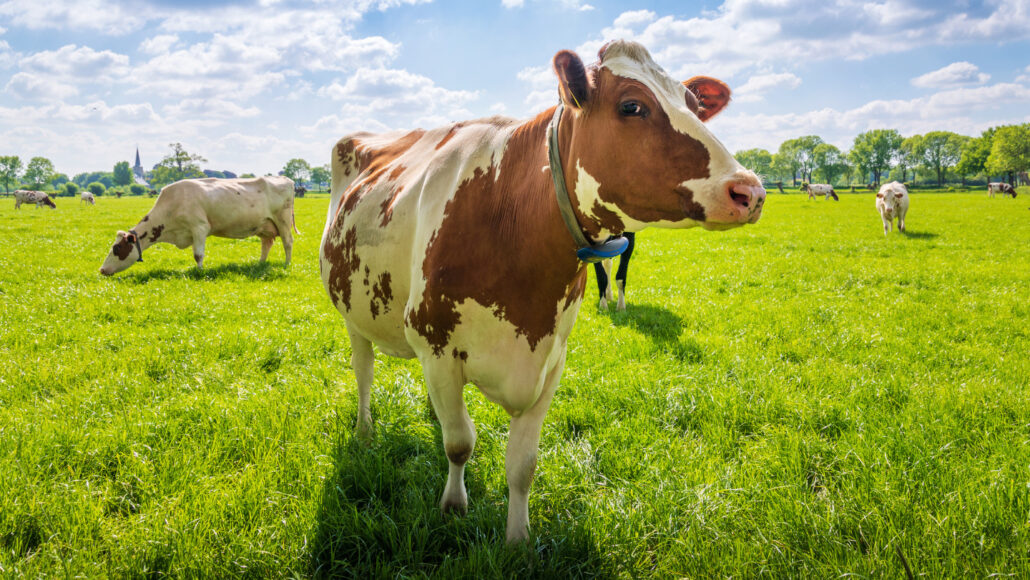Can Red Algae Mitigate Climate-Warming Methane Emissions from Cow Poop?

Earth has a cow problem. Cow agriculture is one of the largest emitters of climate-warming methane to the atmosphere.
But adding a type of red algae known for its methane-inhibiting properties to cow feces might help. Doing so reduces the production of methane within feces by about 44 percent, researchers report July 13 in Frontiers in Sustainable Food Systems. That offers a promising new avenue to reduce overall methane emissions from cattle, the scientists say.
Cow agriculture is responsible for nearly a quarter of the world’s emissions of methane, a potent greenhouse gas (SN: 11/18/15; SN: 5/5/22). The cows make methane in their guts during digestion that is then released to the world, mostly via burps. A smaller — but not insignificant — amount of methane is also emitted directly from the cows’ feces during decomposition.
Researchers have been actively seeking solutions to the gut-produced methane. Adding just a pinch — 0.5 percent of the dry feed — of the red algae Asparagopsis taxiformis to the cows’ food can prevent about 65 percent of that methane production.
Ubiquitous in tropical ocean waters, A. taxiformis contains an organic compound called bromoform, which inactivates an enzyme that normally helps the methane reaction along. This research has raised concerns that the milk of dairy cows fed the algae may contain toxic levels of bromoform as well as iodine in their milk and meat. The U.S. Environmental Protection Agency has assessed bromoform as a probable human carcinogen, and too much iodine can cause thyroid malfunction.
Mohammad Ramin, an animal scientist at the Swedish University of Agricultural Sciences in Umeå, and colleagues wondered whether it might be possible to cut out the middleman — by adding the algae directly to the cows’ poop. That wouldn’t reduce the gut-produced methane, but it might reduce overall cattle emissions without impacting meat or milk.
Methane emitted from feces is primarily a problem when it comes to dairy cows, says Sara Place, an animal scientist at Colorado State University in Fort Collins who was not involved in the study. Dairy cows tend to be raised in environments with more oxygen-poor soils, and methane-producing bacteria thrive in such anaerobic environments. Cows raised for beef tend to live out their lives and defecate in open pasturelands or in an enclosed, but dry, feedlot, which is less conducive ground for methane production.
In the new study, Ramin and colleagues added algae to four dairy cows’ feces. Two had been fed the algae, and two hadn’t. Each fecal sample was divided further, with one subsample given additional algae and the other left alone. Then, all the fecal samples were allowed to incubate, slowly decomposing in the laboratory. After nine weeks, the team analyzed the subsamples to see how much methane they contained.
As expected, adding algae to the cows’ food did initially reduce methane in their poop. But once the poop began to decompose, the production of new methane wasn’t affected by whether the cows had eaten the algae or not. The team also examined the microbial communities living in the different types of poop, and they found that there wasn’t much difference between the algae-fed cows and the control cows. That suggests that algae food supplements aren’t that effective at inhibiting methane production outside the stomach.
But adding the algae directly to the feces did make a noticeable difference to methane coming from decomposition. That, the team says, suggests that this would be an effective part of the solution to the larger cow-methane problem.
The major strength of this new work is that it focuses on providing a solution to an understudied part of the cow-methane problem, says Christopher Glasson, a chemist at the University of Waikato in Tauranga, New Zealand, who studies agrichemicals derived from seaweed. But ultimately, he says, it may just not be cost-effective to produce A. taxiformis for this particular purpose. “I think [this strategy] is likely to be nonviable due to the cost of the production of the seaweed.”
Get great science journalism, from the most trusted source, delivered to your doorstep.
A. taxiformis may still be most effective at suppressing fermentation in a cow’s guts rather than in its manure. The good news, Glasson says, is that state-of-the-art feed additive technologies that use specific extracts from the algae rather than the whole biomass greatly mitigate the risk of iodine or bromoform toxicity.
And the study’s conclusion that algae in the cows’ feed doesn’t affect methane production in their feces might also be good news, in a way, Place says. One proposed avenue for mitigating emissions from cow feces is to harness the methane to make biogas. “If you feed [algae] to cattle for methane mitigation [and] if you don’t see any results [in the manure], that could be good for biogas production,” she adds — a possible two-fer for the industry.
Our mission is to provide accurate, engaging news of science to the public. That mission has never been more important than it is today.
As a nonprofit news organization, we cannot do it without you.
Your support enables us to keep our content free and accessible to the next generation of scientists and engineers. Invest in quality science journalism by donating today.




